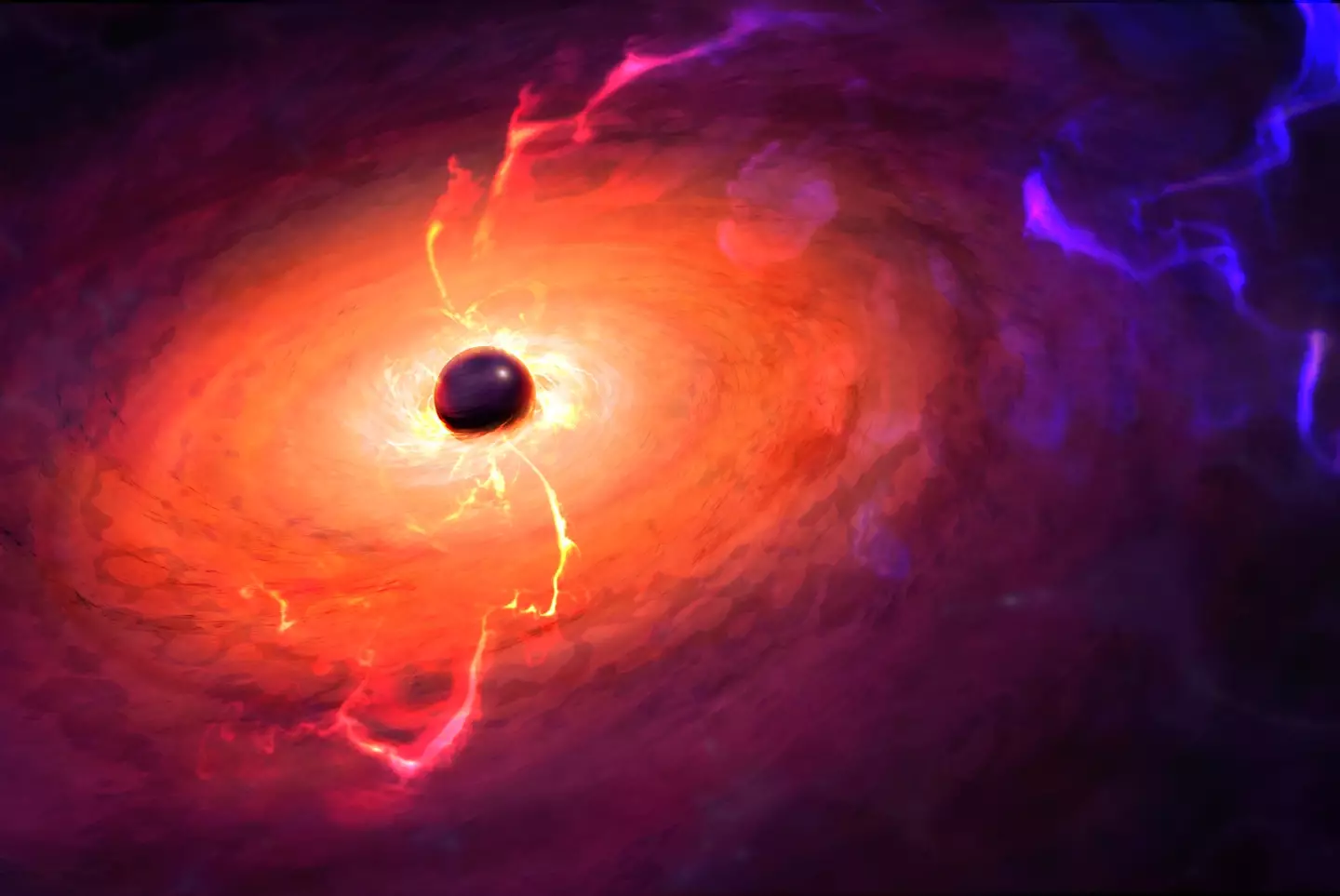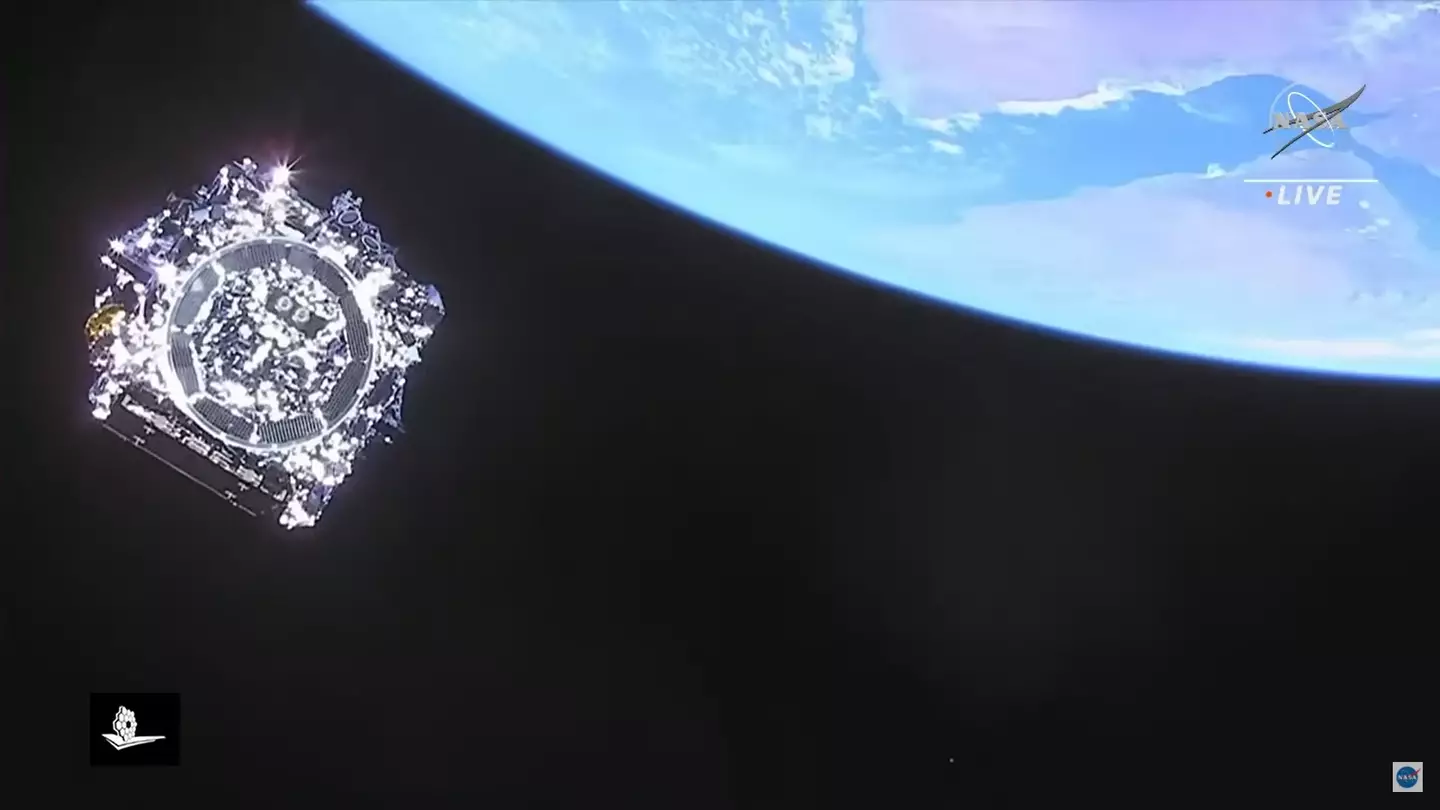
Using the James Webb Space Telescope, scientists have discovered an 'extremely red' supermassive black hole from the beginning of the universe that is quickly eating everything around it.
The hi-tech piece of equipment, launched into space by NASA just over two years ago, spends its days taking pictures of some of the mysterious goings on found in deep space.
At a cost of $10 billion, it is well and truly proving its worth already with some of the bizarre and amazing discoveries it has found to date.
Advert
It uses its Near-InfraRed Camera (NIRCam) to present images that we couldn't comprehend with our own eyes.
And it has been critically important in the realm of black hole exploration, finding amazing discoveries that scientists 'thought were impossible'.
The black hole goodness doesn't stop there, with the JWST now used to discover yet another supermassive black hole that's been lurking in the early days of the universe.
Leading on the discovery is Doctor Lukas Furtak and Professor Adi Zitrin of the Ben-Gurion University of the Negev in Israel.

Their research has found that the supermassive black hole is roughly 40 times the mass of our Sun; which makes it an absolute monster compared to the galaxy it sits in.
Advert
Thankfully for Earth and solar system, it's not nearby.
We're talking quite the distance at 12.9 billion light-years away from our planet.
But it is getting closer, with the black hole devouring everything around it at a quick rate. It's where the reddish colour comes from, with it indicating that it sits in a thick veil of dust thats obscuring most light from passing through.
Dr Furtak said: "We were very excited when JWST started sending its first data.

"We were scanning the data that arrived for the UNCOVER program and three very compact yet red-blooming objects prominently stood out and caught our eyes.
Advert
"Their 'red-dot' appearance immediately led us to suspect that it was a quasar-like object [supermassive black holes in the centers of galaxies that are actively accreting material]."
Prof. Jenny Greene from Princeton University, and one of the lead authors of the recent paper, said: "All the light of that galaxy must fit within a tiny region the size of a present-day star-cluster.
"The gravitational lensing magnification of the source gave us exquisite limits on the size. Even packing all the possible stars into such a small region, the black hole ends up being at least one per cent of the total mass of the system.

"In fact, several other supermassive black-holes in the early universe have now been found to show a similar behaviour, which lead to some intriguing views of black hole and host galaxy growth, and the interplay between them, which is not well understood."
Advert
Astronomers do not know if such supermassive black-holes grow, for example, from stellar remnants, or perhaps from material that directly collapsed into black holes in the early universe.
Featured Image Credit: Getty Stock ImagesTopics: James Webb Space Telescope, Space, Science, Weird, Education, NASA, World News